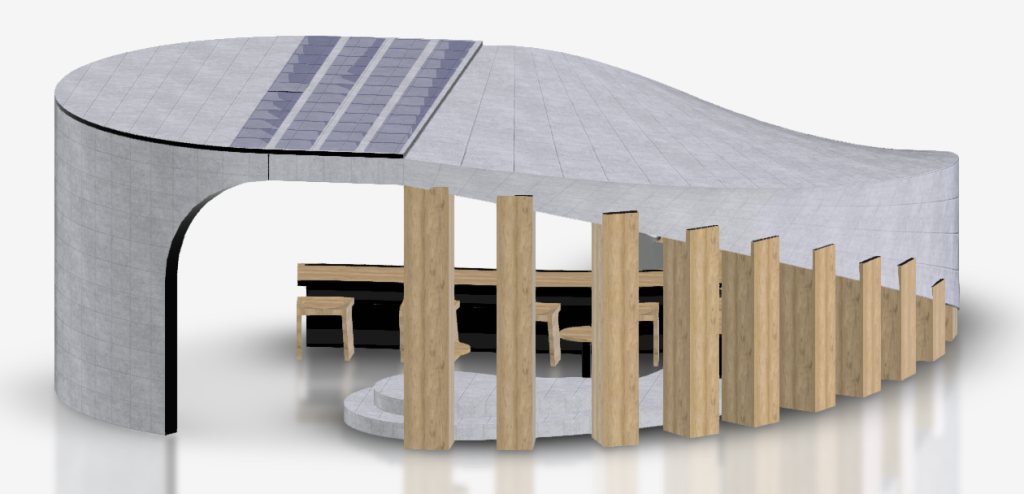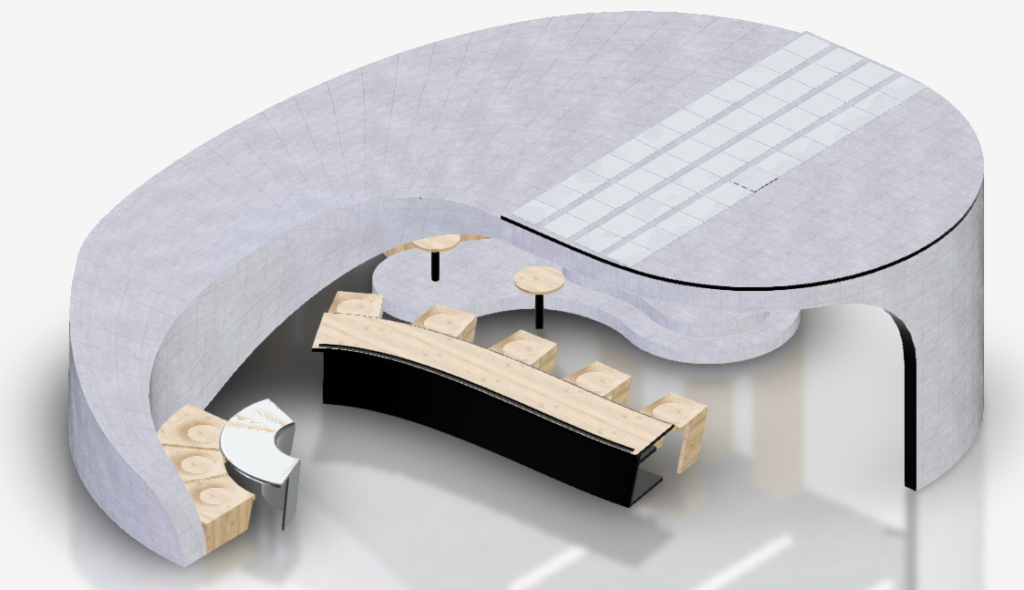In a first for the Designathon, team Ritmik secured recognition from Autodesk as a wildcard winners.
The calibre of the entries in the third edition of the international student competition was incredibly high so an additional category was introduced, as a surprise, in the third edition of the Designathon.
John Peros, Director – Autodesk Learning Partner Program, decided to play a wildcard by selecting an additional team for celebration from the 178 entries. In marking their achievement:
“I just love the way this shape flows. One of the great things about Autodesk Fusion is being able to create smooth transitions in your modelling. The scale and feel of the space is very inviting.”
Büşra Ulucak, Çağan Hancı and Elif Güvendik, Industrial Design students at Middle East Technical University, Türkiye, made up Ritmik. They designed a self-sufficient outdoor study pavilion that blends renewable energy with user-centred design. The distinctive roof form, lined with photovoltaic panels, generates clean power for lighting and device-charging while providing shade and rain protection.
When asked about their wildcard win, they said:
“It was actually a surprise since we were the last team that was announced as wildcard winners and we did not know that there was any other category, but we are quite happy and shocked in a good way about the results of our work.”


Their success has been acknowledged by their university.
Prof. Dr. Gülay Hasdoğan, Head of the Department of Industrial Design, Faculty of Architecture said:
“Team Ritmik showed an excellent understanding of one of the core principles of industrial design: the need to harmonise aesthetics with functionality. It’s exciting to see how effectively they used digital modelling to explore and refine the flowing, organic forms at the heart of their concept. As their tutor, it’s rewarding to watch students grow into confident, capable designers who can communicate strong ideas through both form and function.”
Team Ritmik will now be able to access Autodesk certification, widely recognised by employers around the world.
Working to a tight Designathon schedule honed the team’s organisation and work-division skills, forcing them to adapt quickly when there was “no time to research existing products”. That agility – and new-found confidence with Autodesk Fusion for rapid digital prototyping – will serve them well as they pursue careers in industrial design.
About the Designathon
Designathon 2025, organised by KnowledgePoint, was the third edition of a two‑day international online design challenge for teams of engineering and industrial design students. Students were offered training to boost their Autodesk Fusion modelling skills and learn about key workflows.
They then worked in teams of two or three to respond to a sustainable design challenge – the student teams were asked to design an accessible, aesthetically-pleasing outdoor hub where students can gather, work and charge their devices. The solution needed to use a renewable energy source (or sources) for the electrical supply. The design needed to consider durability, usability and impact on the environment.
This year teams of students from 140 educational institutions took part. 178 projects were submitted, involving 446 participants in 17 countries. Entries were of a very high standard, making the selection of winners very difficult for the jury.
For more information about Designathon 2025 and Autodesk’s commitment to education, visit our landing-page here.
